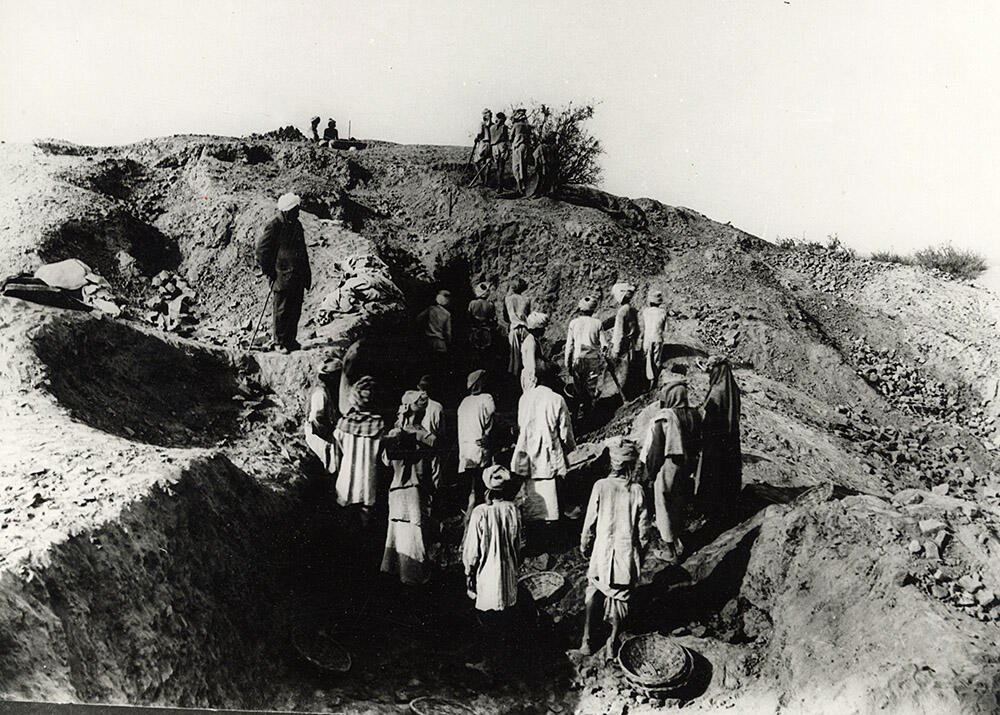"The excavation of the mounds F and A and B was commenced in the beginning, of January 1921, and continued up to the middle of February. The operations were carried on under my personal supervision . . ." wrote Sahni (p. 9), but it is unclear if that is him overseeing this first excavation trench dug on Mound AB. The man seems somewhat older and different in physique than Sahni although it is hard to tell as so few photographs of him seem to survive.
Note too how the plant on the top to the slight right is the same plant visible on the top right of the mound in the previous image.
Sahni's expectations were high, for he wrote:
"The two large undulating rings of lime stone and slab locally believed to be the thumb rings and ring gem of the Naogaza saint, but in reality some kind of architectural members which must have been found in this mound, are also already well-known It was, therefore, not unreasonably expected that other portions of the edifice to which these relics belonged might still be reclaimed."
- Daya Ram Sahni, Annual Progress Report of the Archaeological Survey [of India], Hindu and Buddhist Monuments, Northern Circle for the Year Ending 31st March 1921, p. 10.
"The lack of any excavation trench lines or gridding is characteristic of the methods used by the early excavators. Most of the debris that they were encountering was dumped earth left by the brick mining that totally destroyed most of the fired brick architecture of the site."
- Jonathan Mark Kenoyer, 2021.
[Appendix D] 2744 Area to west of Naogaza's tomb under excavation.
[Original caption] Harappa – Area to west of Naugaza's tomb under excavation.

